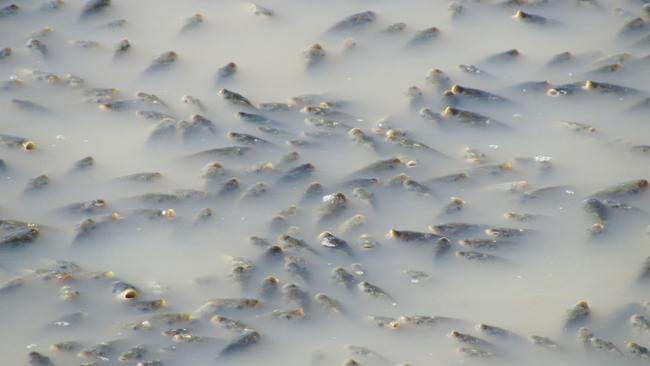Muddy legacy: carp increase river turbidity by 63 per cent
Researchers have for the first time measured how carp turned Australian rivers upside down, killing off the native fish food chain.

Carp are responsible for increasing the turbidity of the Murray Darling Basin’s waterways by an average 63 per cent, wiping out 36 per cent of water plants and almost a third of yabbies, freshwater crayfish, shrimp and even water bugs.
That’s the startling findings of seven Australian aquatic scientists, who used 41 studies to develop a model that measures the ecological impacts of carp, publishing their results in the Biological Conservation journal this month.
“For the first time, we provide a spatially explicit assessment of the impact this invasion has had on aquatic environments at a continental scale in Australia,” the research team reported.
“Our model predicted in some areas up to 90 per cent of the macrophyte (water plants) standing biomass has been lost and turbidity increased up to 500 per cent due to carp (in some locations).
“Our modelling clearly indicates that carp are having multiple and ongoing ecological impacts; hence they have often been described as ecosystem engineers.
“Invasive species not only decrease native species populations, but also negatively impact ecological communities.”

Victorian Arthur Rylah Institute aquatic ecologist Jarod Lyon, who co-authored the paper, said the research “added urgency to the call for carp control and helps (the federal government) decide whether koi herpes virus is going to deliver ecological benefits”.
The virus is yet to be released, despite six years of federally funded research and community consultation on developing a national carp control program that found the virus was highly specific to carp and could kill off 40-60 per cent of the population in Australian waterways.
Dr Lyon said his team’s research added weight to the value of carp control, giving river and wetland managers the evidence they needed to understand the pest’s impacts on a large scale.
He said the work showed removing carp would not only help ecosystems, it would make for a cleaner river, lowering turbidity, delivering health and economic benefits to river communities.
The team also found the carp invasion in Australia increased nitrogen in waterways by 2 per cent, plankton biomass by 7 per cent and phosphorus by 8 per cent.
The national carp control program has previously reported carp, which were introduced to Australia more than 100 years ago, now make up 80-90 per cent of fish biomass in the Murray-Darling Basin.
However Dr Lyon did many of the ecological measures the team modelled, such as carp’s impact on water plants, were known to have significant impacts on native fish species.




